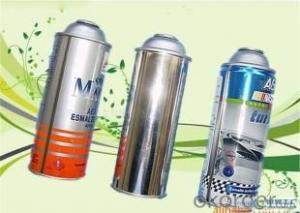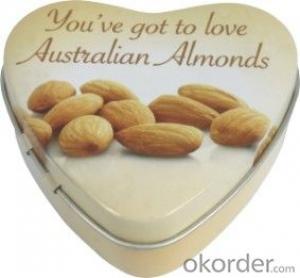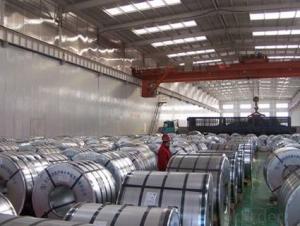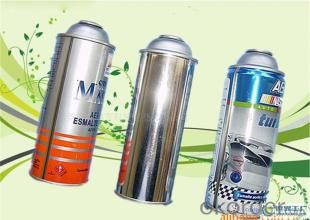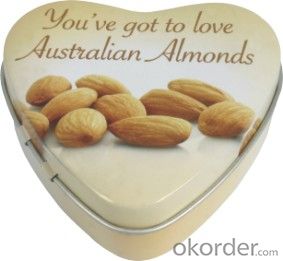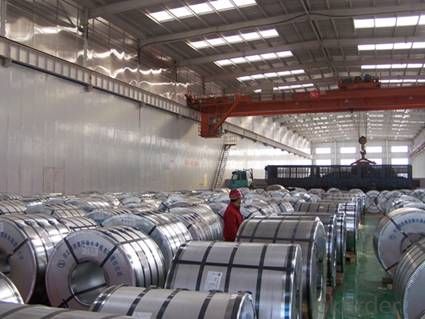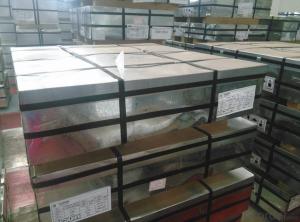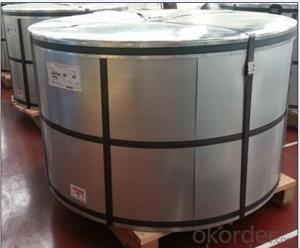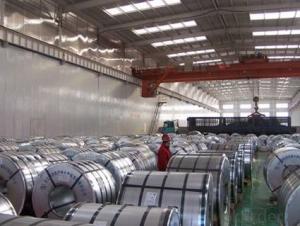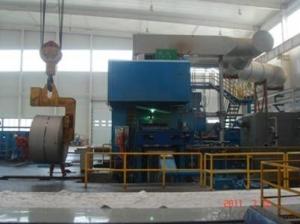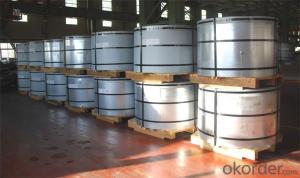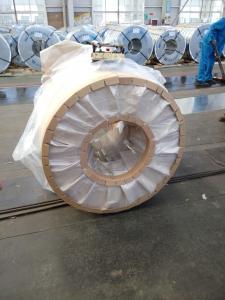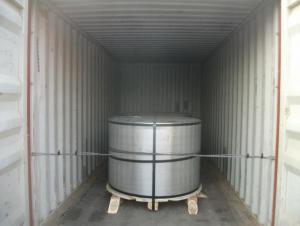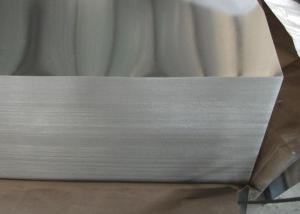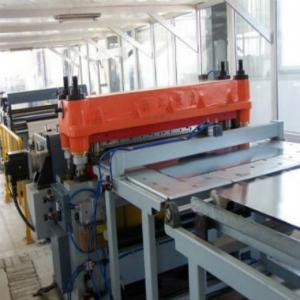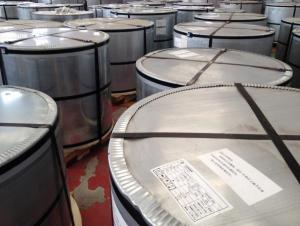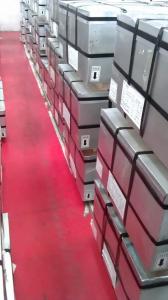Food And Industrial Usage Tinplate, MR, 2.8/2.8g/M2
- Loading Port:
- Tianjin
- Payment Terms:
- TT OR LC
- Min Order Qty:
- 50 m.t.
- Supply Capability:
- 40000 m.t./month
OKorder Service Pledge
OKorder Financial Service
You Might Also Like
1.Usage
Tinplate is widely used for making all types of containers, containing industrial usage such as paint can, oil can, aerosol cans etc., and food cans like milk powder cans, tomato paste can, dry food cans etc.
2. Quality
As a state owned company and a large tinplate supplier in China, our tinplate quality ranks 1st level in China, similar to Bao Steel, Posco etc.
3. Specification
standard: GB/T2520, JIS G3303, DIN EN10202
Material: MR /SPCC
Thickness available: 0.16-0.50MM
Width available: 600~1050MM
Temper grade: T1 – DR8
Tin coating: ordinary 2.8g/2.8g, 5.6g/5.6g and others
Package: sea worthy export package.
Applications: Tin can for chemicals & paint cans, industrial cans, food cans
4. Our factory photo & equipments

5. Our Markets:
now our tinplate has been sold to more than 50 countries, including Europe country, Gulf Area, South American, South Afric etc.
6. Our Overseas Wareouses:
Furthermore, in the year 2014, we have more than 10 overseas warehouses all over the word, located in KSA, UAE, Oman, Russia, Kuwait, Qatar, Oman, Chile, Brazil etc.
7. FAQ
a. what's the annual output?
about 500,000 tons per year.
b. where's the raw matrial from?
our hot rolled coil is purchased from Capital Steel and other state owned mill, with quite good quality.
c. how long is the delivery time?
normally for SPCC about 45~55 days, while 65~75 days for MR material
d. how to control the quality during production process?
inside our workshop, we have MES syestem. It realizes the optimization of the production procedure in the workshop. It could record each step of the whole production procedures, and if some problem appears, factory could easily found and take action, it’s quite helpful to monitor and control the quality.
- Q: How does tinplate contribute to the presentation of jewelry?
- Tinplate contributes to the presentation of jewelry by providing a durable and attractive packaging solution. It offers a sleek and shiny surface that enhances the visual appeal of the jewelry, making it more eye-catching and appealing to customers. Additionally, tinplate's ability to be molded into various shapes and sizes allows for creative and customized packaging designs that can effectively showcase the jewelry's unique features. Its protective properties also help preserve the quality and condition of the jewelry, ensuring that it reaches the customers in pristine condition.
- Q: What are the main challenges in tinplate warehousing?
- One of the main challenges in tinplate warehousing is the fragile nature of the product. Tinplate is susceptible to scratching, denting, and corrosion, so careful handling and storage procedures are necessary to prevent damage. Additionally, due to its relatively low melting point, tinplate requires proper temperature and humidity control to avoid deformation or discoloration. Lastly, tinplate is often packaged in large and heavy rolls, making logistics and space utilization critical challenges in warehousing operations.
- Q: How is tinplate used in the construction industry?
- Tinplate is commonly used in the construction industry for various applications. Its corrosion-resistant properties make it an ideal material for roofing and cladding systems, where it provides durability and protection against weather elements. Additionally, tinplate is used in the manufacturing of HVAC ductwork, gutters, and downspouts due to its strength and ability to withstand harsh environmental conditions. The versatility and ease of fabrication of tinplate make it a preferred choice for construction projects.
- Q: What are the different types of tinplate containers available?
- There are several types of tinplate containers available, including cans, tins, drums, and pails. These containers can vary in size, shape, and design to suit different purposes and industries.
- Q: How does tinplate contribute to the protection of textile products?
- Tinplate contributes to the protection of textile products by providing a durable and corrosion-resistant packaging material. It acts as a barrier against moisture, oxygen, and other environmental factors that could damage the textiles. Additionally, tinplate containers can be sealed tightly, ensuring that the textile products remain intact and free from contamination during storage and transportation.
- Q: How does tinplate compare to aluminum in terms of recyclability?
- Tinplate and aluminum are both highly recyclable materials. However, aluminum is often considered more recyclable than tinplate due to its higher recycling rate and energy efficiency in the recycling process. Aluminum can be recycled indefinitely without losing its properties, whereas tinplate may require some additional processing to remove the tin coating before recycling. Nonetheless, both tinplate and aluminum contribute to a sustainable circular economy when properly recycled.
- Q: How is tinplate stored?
- Tinplate is typically stored in a dry, well-ventilated area to prevent moisture and humidity from causing corrosion. It is advisable to stack the tinplate sheets or rolls on pallets or shelves, ensuring they are kept away from direct contact with the ground to avoid damage. Additionally, it is important to protect the tinplate from any potential sources of scratching or denting during storage.
- Q: What are the main challenges in recycling tinplate?
- The main challenges in recycling tinplate include the separation of tin from the steel base, the removal of any contaminants or coatings on the tinplate, and ensuring the proper sorting and collection of tinplate waste to prevent it from ending up in landfills. Additionally, the energy-intensive process of melting and refining tinplate poses environmental concerns and requires adequate infrastructure for recycling facilities.
- Q: How does tinplate perform in terms of moisture barrier properties?
- Tinplate performs exceptionally well in terms of moisture barrier properties. Its inherent resistance to moisture makes it an ideal choice for packaging applications, as it effectively prevents the penetration of moisture, thus preserving the integrity and quality of the contents inside.
- Q: How is tinplate affected by exposure to UV light?
- Tinplate is not significantly affected by exposure to UV light due to its protective coating of tin, which acts as a barrier against UV radiation.
Send your message to us
Food And Industrial Usage Tinplate, MR, 2.8/2.8g/M2
- Loading Port:
- Tianjin
- Payment Terms:
- TT OR LC
- Min Order Qty:
- 50 m.t.
- Supply Capability:
- 40000 m.t./month
OKorder Service Pledge
OKorder Financial Service
Similar products
Hot products
Hot Searches
Related keywords
